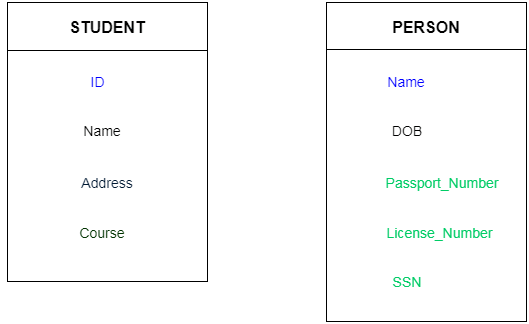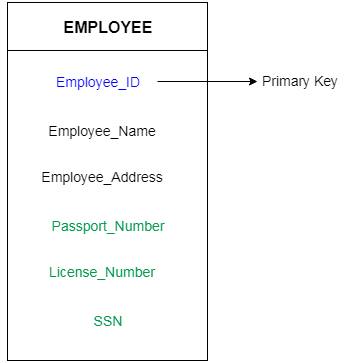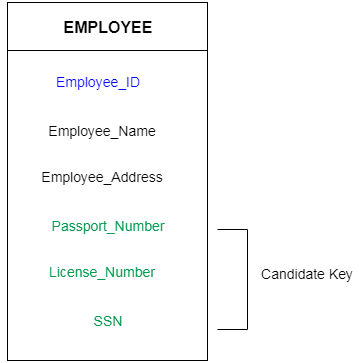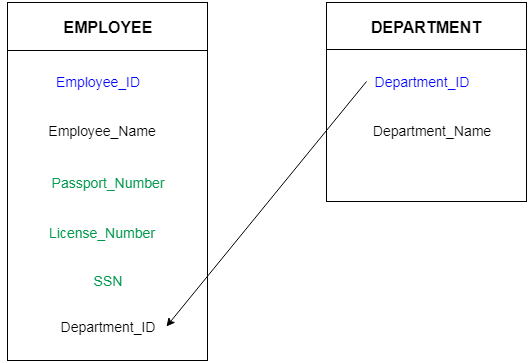Keys
- Keys play an important role in the relational database.
- It is used to uniquely identify any record or row of data from the table. It is also used to establish and identify relationships between tables.
For example: In Student table, ID is used as a key because it is unique for each student. In PERSON table, passport_number, license_number, SSN are keys since they are unique for each person.

Types of key:

1. Primary key
- It is the first key which is used to identify one and only one instance of an entity uniquely. An entity can contain multiple keys as we saw in PERSON table. The key which is most suitable from those lists become a primary key.
- In the EMPLOYEE table, ID can be primary key since it is unique for each employee. In the EMPLOYEE table, we can even select License_Number and Passport_Number as primary key since they are also unique.
- For each entity, selection of the primary key is based on requirement and developers.

2. Candidate key
- A candidate key is an attribute or set of an attribute which can uniquely identify a tuple.
- The remaining attributes except for primary key are considered as a candidate key. The candidate keys are as strong as the primary key.
For example: In the EMPLOYEE table, id is best suited for the primary key. Rest of the attributes like SSN, Passport_Number, and License_Number, etc. are considered as a candidate key.

3. Super Key
Super key is a set of an attribute which can uniquely identify a tuple. Super key is a superset of a candidate key.
For example: In the above EMPLOYEE table, for(EMPLOEE_ID, EMPLOYEE_NAME) the name of two employees can be the same, but their EMPLYEE_ID can't be the same. Hence, this combination can also be a key.
The super key would be EMPLOYEE-ID, (EMPLOYEE_ID, EMPLOYEE-NAME), etc.
4. Foreign key
- Foreign keys are the column of the table which is used to point to the primary key of another table.
- In a company, every employee works in a specific department, and employee and department are two different entities. So we can't store the information of the department in the employee table. That's why we link these two tables through the primary key of one table.
- We add the primary key of the DEPARTMENT table, Department_Id as a new attribute in the EMPLOYEE table.
- Now in the EMPLOYEE table, Department_Id is the foreign key, and both the tables are related.





No comments:
Post a Comment